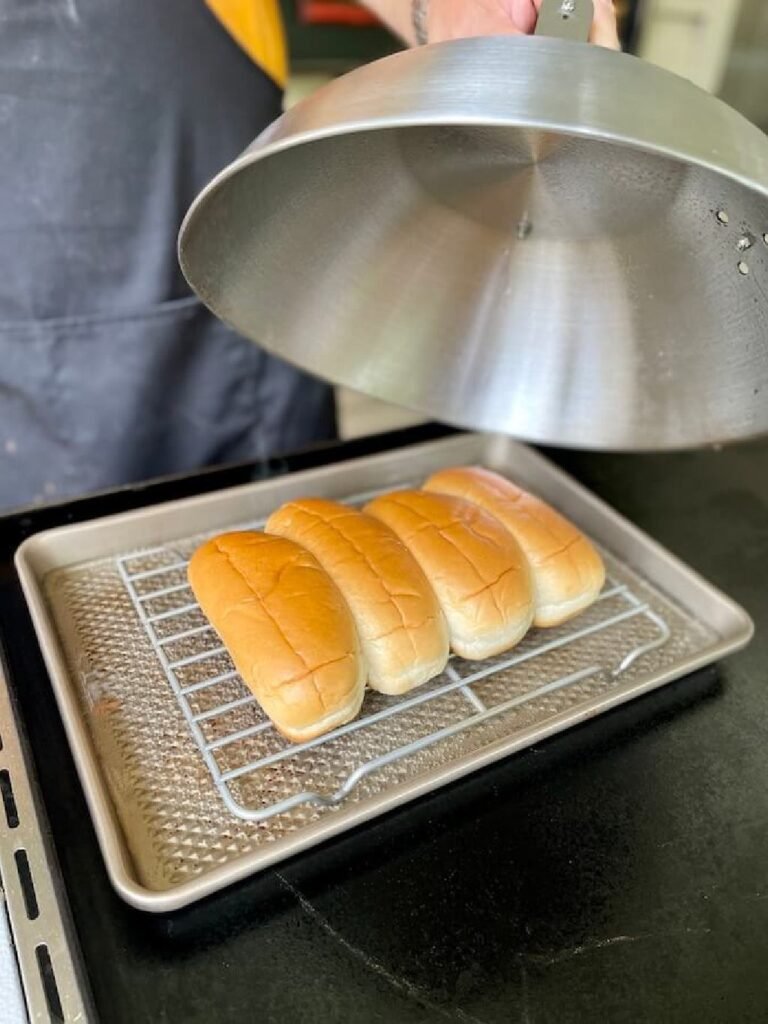How To Get Burnt Taste Out Of Soup? Rescue Your Soup
Nothing beats the smell of hearty vegetable soup simmering. But it can turn bitter if you leave it on the stove too long. I’ve been there, standing over a pot with that sinking feeling, realizing the bottom layer has scorched.
It can be frustrating, especially after you’ve put in a lot of work and used fresh ingredients. However, there is still hope! Don’t let burnt soup ruin dinner.
Here’s the thing: while you can’t go back and stop it from burning, there are clever ways to salvage your soup and get rid of that unpleasant charred taste. Have you thought about transferring it? You could mask the bitterness or use an unexpected ingredient to restore balance. Trust me, the solutions are simpler than you think.
Stay tuned as I guide you through several proven strategies to revitalize your soup. These methods can save your dinner. You can add some acidity or remove the burnt bits. Knowing how to fix it will save your meal and boost your cooking confidence.
Understanding the Causes of Burnt Soup
Burning soup is a common kitchen mishap that can ruin a meal in minutes. One of the biggest culprits is high heat, which causes the bottom layer to overcook while the rest remains untouched. Using a thin-bottomed pot can also lead to scorching, as it fails to distribute heat evenly. A common mistake is not stirring. If you don’t move the mixture, ingredients can settle at the bottom and stick to the surface.
Signs Your Soup is Burning
Knowing the warning signs can save your dish before it’s too late:
| Sign | What It Means |
| Dark specks or sticking | Food is charring at the bottom |
| Smoky aroma | Burnt particles are releasing odor |
| Bitter taste | Scorching has affected flavor |
To prevent burning, stir frequently, use low to medium heat, and opt for a heavy-bottomed pot that distributes heat more evenly.
5 Ways to Get Burnt Taste Out of Soup

1. Switch to a New Pot
One of the simplest ways to remove the burnt flavor from a soup or stew is to ladle it into a new pot.
Make sure you don’t go to the bottom and scrape up the burnt base. This will defeat the purpose of removing them with beneficial liquid and vegetables.
Slowly reheat on low flame and taste. You can add more ingredients if needed to replace nutrients lost in the transfer.
2. Add Sugar or Honey
A tablespoon of honey or a teaspoon of sugar may help to cover up the burnt flavors, as well as the burnt smell.
But you can use any sweetener (like peanut butter). Depending on the soup you’re cooking, a small cup of diced tomatoes or tomato sauce is another option.
A vichyssoise that relies on potatoes and leeks for its creamy appearance will not work this way, but these additions can save a vegetable soup. Taste it and add sweetener if the flavor is too strong.
You can use some sautéed or caramelized onion to eliminate the burned flavor. Before cooking, make sure you’ve transferred the ingredients to a big pot or pan.
3. Add in Raw Potatoes (Discard potatoes after cooking)
If you add potatoes to your soup or stew, remember they soak up flavors from the pot. This includes the burnt taste.
Remove the burned stuff, switch pots, and add a fresh, raw potato sliced quarterly to the burnt soup mix. Set it aside for about 15 minutes.
If you ought to add potatoes back into your dish, parboil fresh potatoes for 10 minutes. Remove the raw potato you added earlier, then add the potatoes you parboil.
4. Mix in Vinegar, Lemon, or White Wine
If there’s still a burnt taste after doing the previous methods, a dash of lemon juice or any vinegar in a small amount can help. Taste it after each addition to see if it changes the burnt taste.
You can also add a splash of sherry or Madeira wine. This will help mask the burnt taste and boost the flavor of your vegetable soup or other dishes.
5. Sprinkle Cinnamon
A grind cinnamon sticks solution can also help remove the burnt taste from soups and enhance the flavor.
After you switch your pot, you can sprinkle some cinnamon on the soup (be it potato soup, chicken stock, etc.). This will take away the burned smell and taste of the dish.
How To Prevent Soup From Burning
Pay Attention
When thickening liquids soup to condense the flavor, monitor the process closely. Condensing for an extended period frequently results in a burnt base and pungent relish.
Cook in Low Heat
You don’t need high heat to cook soup. Therefore, we recommend keeping the heat at a low level. This way, you can avoid getting the burnt taste burnt. But do not ever leave the food cooking unattended, even if it’s on low fire.
Stir Frequently
To avoid burning the food you’re cooking, constantly stir or as needed. This will prevent the liquid from getting exposed to too much heat – causing it to smolder.
FAQs on Get Burnt Taste Out Of Soup
Why is your soup burning?
If the liquid doesn’t boil away, the meat and veggies can stick to the pot’s bottom. This can scorch and burn the soup.
Cooking at an excessively high temperature or not stirring enough can result in this culinary disaster.
Is it safe to eat burnt soup?
No, you should not eat burned soup as much as possible. Eating burned soup would deprive you of the soup’s healthy nutrients.
Furthermore, it has an unpleasant taste and odor. If you cannot salvage burnt soup, it is best to discard it.
Let’s Sum It Up
Soups, like any other cooked food, can burn.
What’s interesting is that – there are ways to get the burnt taste out of the soup. All the methods above work well. You can switch pots, add raw potato, sugar, honey, vinegar, lemon juice, or sprinkle some cinnamon.
But, you can avoid this if you pay close attention while cooking in low heat and stirring constantly.

Kathy is a restaurateur, artist, and blogger. After spending more than 10 years in the restaurant industry, she has decided to go digital and share her expertise and experience online.







